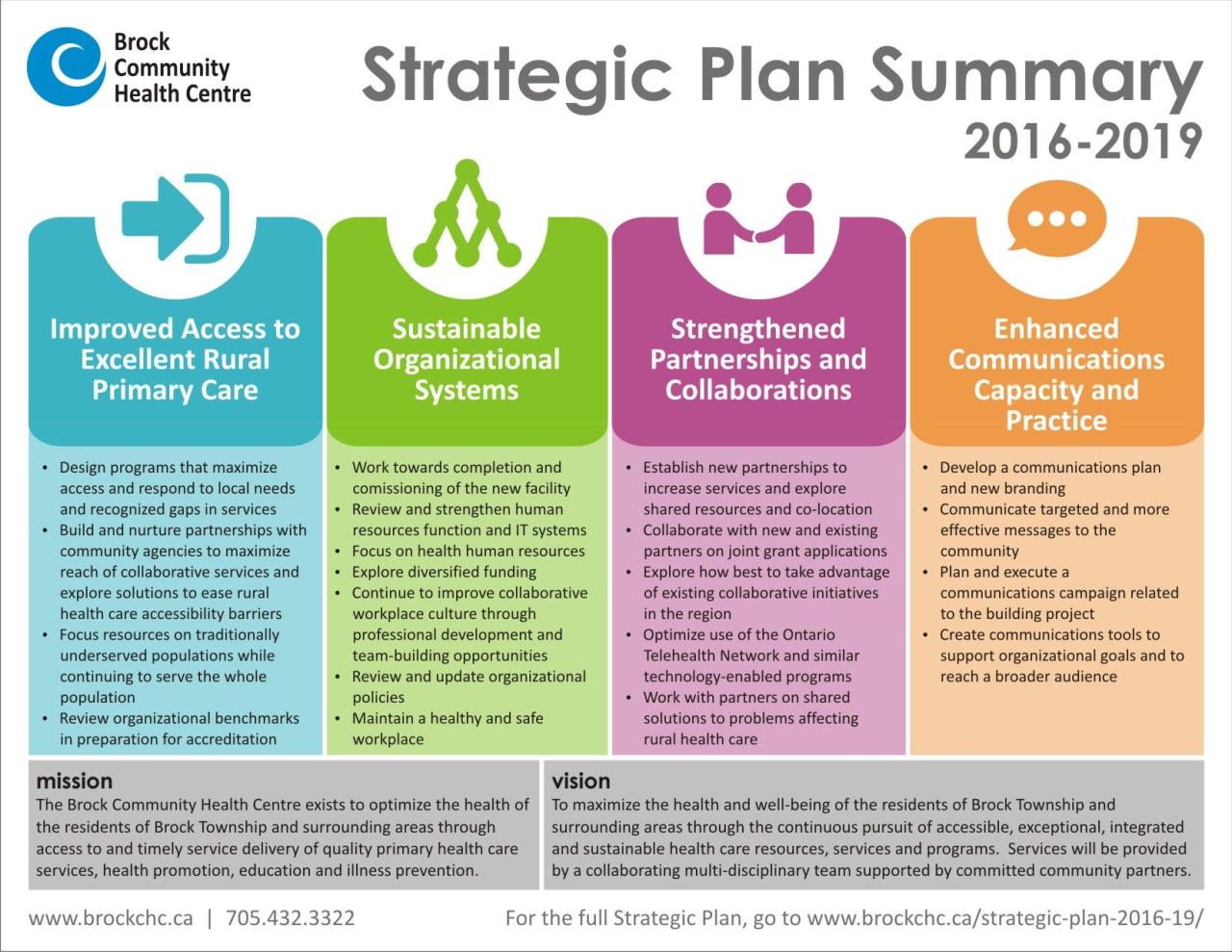Strategies for Healthy Holiday Meal Planning

Planning holiday meals that are both nutritious and festive can be a rewarding experience that promotes health without sacrificing flavor. Effective meal planning involves balancing ingredients to ensure a variety of nutrients while maintaining the rich, comforting flavors that make holiday feasts special. By incorporating thoughtful strategies, you can create a delightful dining experience that supports well-being and reduces last-minute stress during the busy holiday season.
Achieving this balance requires a systematic approach that considers ingredient selection, portion control, and meal timing. Proper planning not only enhances the nutritional quality of your holiday menu but also streamlines the cooking process, allowing you to enjoy the festivities alongside your loved ones. Implementing structured meal planning ensures that health remains a priority without compromising on the traditional flavors and indulgences that make holidays memorable.
Methods to Balance Nutritional Content with Festive Flavors
Blending health-conscious choices with festive flavors involves selecting ingredients that enhance taste while providing essential nutrients. Incorporating a variety of colorful vegetables, lean proteins, and whole grains can elevate the nutritional profile of holiday dishes. Using herbs, spices, and citrus can amplify flavor without adding excess salt or sugar.
- Use herbs and spices: Fresh herbs like rosemary, thyme, and sage add flavor complexity and aroma, reducing the need for high salt content.
- Opt for healthier cooking methods: Baking, steaming, or grilling preserves nutrients and reduces added fats compared to frying.
- Incorporate nutrient-dense ingredients: Including sweet potatoes, cranberries, and leafy greens adds antioxidants and vitamins.
“Balancing flavor and nutrition is about enhancing natural tastes and choosing wholesome ingredients that support health and satisfy the palate.”
Steps to Create a Stress-Minimized, Health-Focused Meal Timeline
Developing a well-organized timeline for holiday meal preparation can significantly reduce stress and ensure a focus on health. A clear schedule allows for efficient use of time, prevents last-minute rushing, and ensures that all components are prepared at optimal freshness and temperature.
- Plan the menu in advance: Decide on dishes that are manageable to prepare and align with nutritional goals.
- Create a shopping list: Include all ingredients, prioritizing fresh and whole foods to avoid last-minute store runs.
- Prepare components ahead of time: Chop vegetables, pre-measure spices, or cook certain dishes a day before to reduce on-the-day workload.
- Schedule cooking times: Allocate specific time slots for each dish, considering oven and stove space, to avoid overlaps and last-minute stress.
- Set up serving stations: Arrange dishes to facilitate easy access, promoting mindful eating and portion control.
Adopting this structured timeline not only alleviates stress but also enhances the overall nutritional quality of the meal by allowing thoughtful ingredient preparation and presentation.
Sample Weekly Holiday Meal Plan with Nutritional Breakdown
Below is a sample weekly meal plan that emphasizes balanced nutrition, festive flavors, and manageable preparation. The plan incorporates a variety of nutrient-rich foods to support overall health during the busy holiday season.
| Day | Meal Component | Details | Nutritional Info (Approx.) |
|---|---|---|---|
| Monday | Breakfast | Oatmeal with fresh berries, chia seeds, and a drizzle of honey | High in fiber, antioxidants, omega-3s; approx. 350 kcal |
| Lunch | Grilled chicken salad with mixed greens, cherry tomatoes, cucumbers, olive oil & lemon dressing | Lean protein, healthy fats, vitamins; approx. 400 kcal | |
| Dinner | Baked salmon with roasted sweet potatoes and steamed broccoli | Rich in omega-3s, vitamin A, fiber; approx. 500 kcal | |
| Tuesday | Breakfast | Greek yogurt with sliced almonds, honey, and sliced kiwi | Probiotic, healthy fats, vitamin C; approx. 330 kcal |
| Lunch | Quinoa and vegetable stir-fry with tofu | Complete protein, fiber, antioxidants; approx. 420 kcal | |
| Dinner | Turkey meatballs with whole grain spaghetti and marinara sauce | Lean protein, complex carbs, lycopene; approx. 550 kcal |
This meal plan ensures a rich diversity of nutrients, satisfying flavors, and ease of preparation, making holiday eating both enjoyable and healthful.
Choosing Nutritious Ingredients for Holiday Dishes

Opting for healthier ingredients in holiday meals not only enhances nutritional value but also contributes to overall well-being during festive celebrations. Making thoughtful substitutions and incorporating fresh, whole foods can transform traditional recipes into balanced and nourishing dishes that satisfy both taste and health goals.
Implementing these strategies involves understanding which ingredients can be replaced with healthier alternatives, as well as learning techniques to seamlessly integrate fresh produce and whole grains into your menu. This approach ensures that holiday meals are both festive and nutritionally beneficial, supporting your health while preserving the flavors and traditions of the season.
Healthier Ingredient Substitutions for Traditional Holiday Recipes
Replacing common ingredients with nutritious alternatives can significantly improve the health profile of holiday dishes. These substitutions often reduce saturated fats, added sugars, and sodium while increasing fiber, vitamins, and minerals. Here are some practical options to consider:
- Butter: Swap with mashed avocado, Greek yogurt, or olive oil to add healthy fats and reduce saturated fat content.
- White Sugar: Replace with natural sweeteners such as honey, maple syrup, or mashed ripe bananas to lower refined sugar intake.
- Refined Flour: Use whole wheat flour, oats, or almond flour to boost fiber and nutrient density.
- Heavy Cream: Substitute with coconut milk, Greek yogurt, or cashew cream for healthier, plant-based options.
- Regular Pasta: Choose whole grain or legume-based pasta to increase fiber and protein.
- Mayonnaise or Cream-based Sauces: Transition to avocado-based spreads or hummus for added nutrients.
These substitutions not only enhance the nutritional profile but also often add unique flavors and textures to traditional holiday dishes, making them more enjoyable and healthful.
Incorporating Fresh Produce and Whole Grains into Holiday Menus
Enhancing holiday meals with fresh produce and whole grains elevates their nutritional content and introduces vibrant colors and textures. Techniques for effective incorporation include:
- Adding Fresh Vegetables: Incorporate seasonal vegetables like Brussels sprouts, carrots, and sweet potatoes in salads, roasts, and side dishes to boost vitamins, antioxidants, and fiber.
- Using Whole Grains: Substitute white rice with quinoa, brown rice, or farro in stuffing, pilafs, and side dishes to increase complex carbohydrates and fiber.
- Creating Colorful Salads: Combine leafy greens, bell peppers, radishes, and herbs for visually appealing and nutrient-dense salads.
- Incorporating Fruits: Use fresh cranberries, pomegranate seeds, or citrus segments to add natural sweetness and antioxidants to salads and desserts.
These techniques not only improve the nutritional quality but also add layers of flavor and visual appeal, making holiday dishes more inviting and health-conscious.
Comparison Table of Traditional Ingredients and Healthy Alternatives
| Traditional Ingredient | Healthy Alternative | Benefits |
|---|---|---|
| White Flour | Whole Wheat Flour | Higher fiber content supports digestion and stabilizes blood sugar levels. |
| Refined Sugar | Honey or Maple Syrup | Natural sweeteners contain antioxidants and nutrients, with a lower glycemic index. |
| Butter | Avocado or Olive Oil | Rich in monounsaturated fats, which promote heart health and reduce inflammation. |
| Heavy Cream | Coconut Milk or Greek Yogurt | Offers probiotics and healthy fats, reducing saturated fat intake. |
| White Rice | Brown Rice or Quinoa | Provides more fiber, vitamins, and minerals, supporting sustained energy and digestion. |
| Mayonnaise | Hummus or Avocado Spread | Contains healthier fats and additional nutrients, with less processed ingredients. |
Integrating these healthier ingredients into holiday recipes enhances the overall nutritional value without compromising flavor, making festive meals more nourishing and enjoyable for everyone.
Portion Control and Serving Size Management
Maintaining appropriate portion sizes during holiday meals is essential for enjoying festive dishes without overindulgence. Proper management of serving sizes not only supports balanced nutrition but also helps prevent discomfort and promotes mindful eating habits. Implementing effective strategies for estimating and serving portions can make a significant difference in achieving a healthy holiday experience while still savoring special dishes.Effective portion control involves understanding the appropriate amount of food suited for individual dietary needs, which can vary based on age, activity level, and health goals.
By being attentive to serving sizes, individuals can enjoy a variety of foods without exceeding their nutritional or caloric requirements. This approach encourages moderation, allowing everyone to indulge in holiday favorites while maintaining overall health.
Estimating Appropriate Portion Sizes to Prevent Overeating
Accurately estimating portion sizes is fundamental to managing intake during festive meals. Several practical procedures can assist in this process:
- Use your hand as a guide: For example, a serving of protein such as chicken or turkey should be roughly the size of your palm or a deck of cards, which typically equates to about 3-4 ounces.
- Visualize familiar objects: A cup of cooked vegetables or grains can be estimated as the size of a clenched fist or a tennis ball, helping prevent servings from becoming overly large.
- Pre-portion foods ahead of time: Serving individual portions onto plates or into containers before guests serve themselves can help control intake and prevent seconds from large servings.
Estimating portion sizes through visual cues and pre-portioned servings encourages mindful eating and reduces the likelihood of overeating during busy holiday gatherings.
Plating and Serving Methods to Promote Mindful Eating
The way food is presented and served plays a crucial role in encouraging mindful eating practices. Thoughtful plating and serving techniques can help individuals recognize fullness cues and appreciate their meals more consciously:
- Use smaller plates and bowls: Smaller dishware naturally limits portion sizes and makes servings appear more substantial, reducing the tendency to overfill.
- Arrange food attractively: Present dishes in a colorful, appealing manner, encouraging savoring each bite and recognizing when enough has been eaten.
- Serve buffet-style with individual portions: Offering pre-plated servings or small bowls for self-service helps control portions and prevents the temptation of second or third helpings from large platters.
- Encourage pacing: Remind guests to eat slowly, savor their food, and listen to their body’s fullness signals, fostering a more mindful approach to food consumption.
Sample Portion Sizes for Common Holiday Dishes
The following table provides typical portion sizes for popular holiday dishes, aiding in estimating servings that align with nutritional recommendations and promote moderation:
| Dish | Standard Portion Size | Notes |
|---|---|---|
| Roast Turkey (skinless, cooked) | 3-4 ounces | About the size of a deck of cards; remove the skin to reduce fat content. |
| Stuffing | 1/2 cup | Approximate to a standard half-cup measuring cup. |
| Mashed Potatoes | 1/2 cup | Control portions to avoid excess calorie intake from added butter or cream. |
| Green Beans | 1 cup | Raw or cooked, served with minimal added fats. |
| Gravy | 2 tablespoons | Use sparingly to reduce sodium and fat intake. |
| Pie (e.g., pumpkin or apple) | 1 slice (1/8 of a standard pie) | Typically about 150-200 calories; consider sharing or limiting slices. |
Applying these portion sizes and serving strategies can significantly enhance the enjoyment of holiday meals while maintaining health-conscious habits. Awareness and moderation are key components for a balanced and joyful holiday dining experience.
Incorporating Dietary Restrictions and Preferences
Ensuring that holiday meals accommodate a variety of dietary restrictions and preferences is essential for creating an inclusive and enjoyable celebration for all guests. Thoughtful adaptations of traditional recipes not only respect individual needs but also enhance the culinary experience by introducing diverse flavors and ingredients. Clear communication about dietary options further promotes a welcoming environment, allowing guests to feel comfortable and catered to without sacrificing meal appeal or presentation.Adapting holiday recipes for vegetarian, gluten-free, or low-sugar diets requires creativity and attention to ingredient substitutions.
It is important to identify core flavors and textures that can be maintained or even elevated through mindful ingredient swaps. For example, replacing meat with hearty vegetables, legumes, or plant-based proteins can create satisfying vegetarian dishes. Similarly, gluten-free baking often involves substituting wheat flour with almond, rice, or coconut flour, while reducing sugar content can be achieved with natural sweeteners such as honey, maple syrup, or stevia.Effective communication with guests about dietary needs is crucial for planning and executing a meal that is both appealing and inclusive.
Providing a clear menu Artikel in advance, highlighting available options, and being receptive to special requests foster a respectful atmosphere where everyone feels valued and accommodated.
Common Dietary Modifications and Preparation Techniques
To assist in adapting recipes for diverse dietary restrictions, the following modifications and techniques are often employed:
- Vegetarian and Vegan Adjustments: Replace meat with plant-based proteins such as lentils, chickpeas, tofu, or tempeh. Use vegetable broth instead of chicken or beef broth to enhance flavor.
- Gluten-Free Substitutions: Swap wheat-based ingredients with gluten-free alternatives like almond flour, coconut flour, or gluten-free oats. Ensure that processed ingredients, such as sauces or condiments, are certified gluten-free to prevent cross-contamination.
- Low-Sugar Variations: Use natural sweeteners such as honey, maple syrup, or agave nectar in place of refined sugars. Incorporate fruits, spices, or vanilla to enhance sweetness naturally without added sugars.
- Dairy-Free Options: Replace dairy milk with plant-based milks such as almond, soy, or oat milk. Use coconut yogurt or dairy-free cheeses in recipes calling for dairy products.
- Nut-Free Alternatives: Substitute nuts with seeds such as pumpkin or sunflower seeds to cater to nut allergies while maintaining texture and nutritional value.
When modifying recipes, always consider the flavor profile and texture to ensure the dish remains appealing and balanced, regardless of dietary adjustments.
Healthy Cooking Techniques for Holiday Meals
During the festive season, preparing meals that are both delicious and nutritious can be a rewarding challenge. Employing healthy cooking techniques helps retain the essential nutrients of ingredients while minimizing the addition of excess fats, salt, and sugar. Incorporating these methods into your holiday meal planning can enhance flavors naturally and support overall well-being.Proper cooking methods are vital for maintaining the integrity of nutrients and reducing unhealthy fats.
Techniques such as baking, grilling, and steaming are particularly effective, as they allow food to retain their flavor, texture, and nutritional content without the need for excessive oils or fats. These methods also facilitate the creation of flavorful dishes that do not rely heavily on salt or sugar, aligning perfectly with health-conscious meal preparation.
Baking
Baking involves cooking food with dry heat in an oven, which allows for even cooking and preserves most nutrients, especially when foods are not overcooked. It is an excellent technique for preparing vegetables, lean meats, and whole grain dishes. Using herbs, spices, and natural flavorings enhances taste without adding unnecessary salt or sugar. Baking also reduces the need for added fats, making it a heart-healthy choice.
Grilling
Grilling uses direct heat from below or above, imparting a smoky flavor that enhances the taste profile of foods naturally. This method is ideal for lean proteins such as chicken breast, fish, and vegetables. Grilling helps excess fats drain away from the food, reducing calorie content. Marinating foods with herbs, citrus, and spices enhances flavor without relying on salt or sugary sauces, making meals more healthful.
Steaming
Steaming involves cooking food over boiling water, which preserves nutrients more effectively than boiling or frying. It is particularly suited for vegetables, seafood, and delicate dishes, maintaining their natural texture and flavor. Steaming requires minimal fats and allows the true taste of ingredients to shine through. Incorporating herbs or citrus into steaming water can elevate flavors without the need for added salt or sugar.
Summary of Cooking Methods with Health Benefits
| Cooking Method | Description | Health Benefits |
|---|---|---|
| Baking | Cooking with dry heat in an oven, evenly distributing heat around the food. | Retains nutrients, reduces need for added fats, promotes even cooking, enhances natural flavors. |
| Grilling | Cooking using direct heat over an open flame or hot coals. | Drains excess fats, imparts smoky flavor, enhances taste without extra salt or oil. |
| Steaming | Cooking food over boiling water using steam, without direct contact with water. | Preserves vitamins and minerals, minimizes added fats, maintains food’s natural texture and flavor. |
Using these techniques can significantly improve the nutritional quality of your holiday meals while ensuring they are flavorful and satisfying. Emphasizing natural flavors through proper cooking methods reduces reliance on salt, sugar, and unhealthy fats, aligning with a health-focused approach to holiday festivities.
Creative Presentation of Healthy Holiday Plates

Presenting healthy holiday meals in an appealing and festive manner enhances the dining experience and encourages nutritious choices. Visually attractive arrangements not only highlight the freshness and vibrancy of nutritious ingredients but also stimulate appetite and create a celebratory atmosphere. Thoughtful presentation transforms simple healthy dishes into festive works of art, making them irresistible to guests of all ages and dietary preferences.
Effective plate presentation involves strategic arrangement, garnishing, and color balancing to showcase the natural appeal of wholesome ingredients. Using creative techniques can elevate standard healthy dishes into eye-catching holiday centerpieces that celebrate both health and festivity. Paying attention to visual details turns meal presentation into an enjoyable part of the holiday tradition, inspiring guests to savor nutritious options without sacrificing aesthetic appeal.
Use of Color and Garnishing to Enhance Visual Appeal
Bright, contrasting colors create an inviting and lively presentation, emphasizing the freshness and variety of ingredients. Incorporating a spectrum of vegetables, fruits, and herbs can make the plate more enticing and visually balanced. Garnishes serve as the finishing touch, adding texture and decorative flair that complement the dish’s flavors while elevating its appearance.
Some effective garnishing ideas include:
- Sprigs of fresh herbs such as rosemary, thyme, or parsley to add greenery and fragrance.
- Thin slices of colorful vegetables like radishes, beets, or bell peppers arranged decoratively around the main dish.
- Edible flowers, which add a touch of elegance and vibrant color, suitable for festive settings.
- Light drizzles of balsamic glaze or lemon juice for visual contrast and flavor enhancement.
“A well-balanced plate is as much about visual harmony as it is about nutritional balance; thoughtful garnishing and color coordination can turn a healthy meal into a works of art.”
Arranging Nutritious Ingredients for Visual Impact
Arranging nutritious ingredients strategically can highlight their natural beauty and make the meal more appealing. Layering different textures and shapes creates depth, while grouping similar colors can produce a harmonious look. Using height and varying plate angles adds dimension, making each component stand out.
Techniques for attractive arrangement include:
- Placing proteins and grains at the center and surrounding them with vibrant vegetables and fruits to create a vibrant focal point.
- Using circular or fan-shaped patterns to showcase sliced vegetables or fruits, which makes the dish more dynamic.
- Creating sections within the plate to keep ingredients separate yet cohesive, allowing each element’s color and texture to shine.
- Employing negative space effectively to prevent overcrowding and emphasize key ingredients.
Designing attractive, healthful plate presentations combines artistic flair with mindful ingredient placement. This approach not only enhances visual appeal but also encourages mindful eating and appreciation for nutritious foods, making holiday meals both delightful and healthful.
Managing Holiday Meal Prep Time Efficiently

Ensuring that holiday meal preparation is organized and time-effective can significantly reduce stress and allow you to enjoy the festivities more fully. Proper planning and strategic execution of meal prep tasks not only streamline the cooking process but also help maintain the nutritional quality of your dishes. By implementing efficient techniques, you can create a delicious, healthy holiday feast without feeling overwhelmed by last-minute rushes.Effective time management during holiday meal prep involves careful planning, utilizing batch cooking methods, and pre-preparing ingredients.
These strategies enable you to spread out the workload over several days, freeing up valuable time on the day of your celebration. Organized shopping routines focused on healthy ingredients also play a crucial role in ensuring a smooth prep process.
Batch Cooking and Pre-Preparation for Time Savings
Batch cooking involves preparing large quantities of specific components of your holiday meal in advance, which can then be stored and used throughout the holiday season. This reduces the need for multiple cooking sessions on the day of the celebration, allowing for a more relaxed and efficient approach.Pre-preparation includes tasks such as chopping vegetables, marinating proteins, and assembling ingredients ahead of time.
These activities can be completed days before, especially if proper storage methods are employed. For example, roasting a batch of vegetables or cooking grains in advance can serve as bases for salads, side dishes, or stuffing, saving significant time during the final meal assembly.
Planning ahead ensures that each task is manageable and prevents last-minute scrambles, leading to a more relaxed holiday experience.
Organizing Shopping Lists Focused on Healthy Ingredients
An organized shopping list tailored to healthy ingredients is essential for efficient meal prep. It ensures that you purchase all necessary items in one trip, avoiding multiple visits that can disrupt your schedule.Start by reviewing your meal plan to identify all fresh, whole, and nutrient-dense ingredients required, such as fresh vegetables, lean proteins, whole grains, and healthy fats. Categorize your list into sections like produce, proteins, grains, and pantry essentials to streamline shopping.
Consider opting for seasonal produce, which tends to be more affordable and flavorful, and select minimally processed items to maximize nutritional benefits.Creating a detailed, prioritized shopping list minimizes unnecessary trips to the store and helps maintain focus on healthy choices, ensuring that your meals are both nourishing and festive.
Prepping Healthy Holiday Meals in Advance: Checklist
Pre-preparing components of your holiday meal can significantly cut down on cooking time during the celebration. Use this checklist to organize your advance prep:
- Chop and store vegetables (carrots, celery, onions, peppers) in airtight containers for salads, stews, or stuffing.
- Marinate lean proteins such as chicken, turkey, or fish a day before to enhance flavor and tenderness.
- Cook grains like quinoa, brown rice, or barley and store in the refrigerator for quick assembly.
- Prepare and portion healthy dips, dressings, or sauces ahead of time, keeping them refrigerated until needed.
- Assemble ingredient bundles or pre-measured spice mixes for quick seasoning during cooking.
- Roast or cook root vegetables and store them to serve as side dishes or toppings.
- Pre-portion nuts, seeds, and dried fruits for salads or snack bowls.
- Prepare dessert components, such as fruit compotes or healthy energy bites, to save time on the day.
Implementing these steps not only ensures that ingredients are ready to go but also minimizes last-minute prep, allowing you to focus on presentation and enjoying your holiday gathering.
Conclusive Thoughts